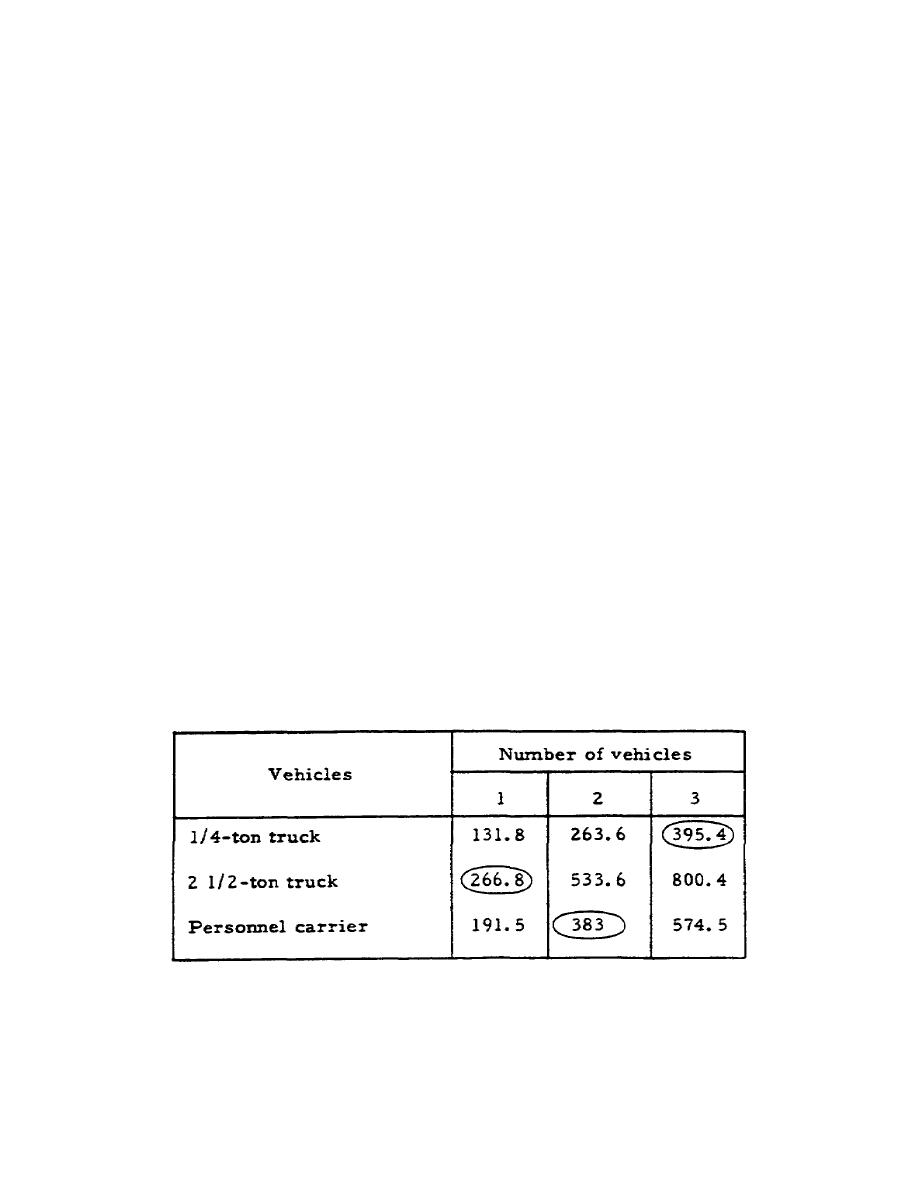
2.10. FIRST REQUIREMENT
Your first problem is to select from the rail equipment on hand the
ones that can carry your vehicles. To make a proper choice, you must know
the characteristics of the trucks and the personnel carrier as well as of
the rail cars themselves. Ordinarily you might consult FM 5515 or TB 5546
to find the length, width, height, weight, capacity, etc., of this
equipment. In the absence of these and other references, and for this
exercise, equipment characteristics are included in appendix II to the text.
Gondolas can be eliminated at once because, as you will recall, there
is no lift capability at the destination and hence no means of lifting
vehicles out of those highsided rail cars. Your choice of cars is now
limited to the 40 and 50ton flatcars, totaling 17 cars. Also in appendix
II you will find all essential equipment characteristics. On the equipment
outlines, truck centers are shown by broken lines. You will need to know
where the centers are because placing the load on the car is affected by the
distance between truck centers, as you read in paragraph 1.14. Now you are
ready to do some simple figuring to come up with the answer as to how many
of which vehicles can be loaded on how many of what size flatcars.
Will height or width be a problem? The tallest of the vehicles, the 2
1/2ton truck, is 116.3 inches, or 9 feet 7 1/2 inches. The table in
paragraph 1.6 tells you that any load up to 10 feet 1 inch high can be as
wide as 10 feet. And since the personnel carrier, the widest of the three
vehicles, measures 105.6 inches, or slightly under 9 feet, you know that
height and width are within specified limits, and under the 108inch width
of both flatcars. This leaves only length and weight. To help you
determine how many of the same type of vehicle will fit lengthwise on the
two flatcars, make a simple table, like the one shown here. As you study
the tables and discussions
LENGTH OF VEHICLES, INCHES
40



 Previous Page
Previous Page
